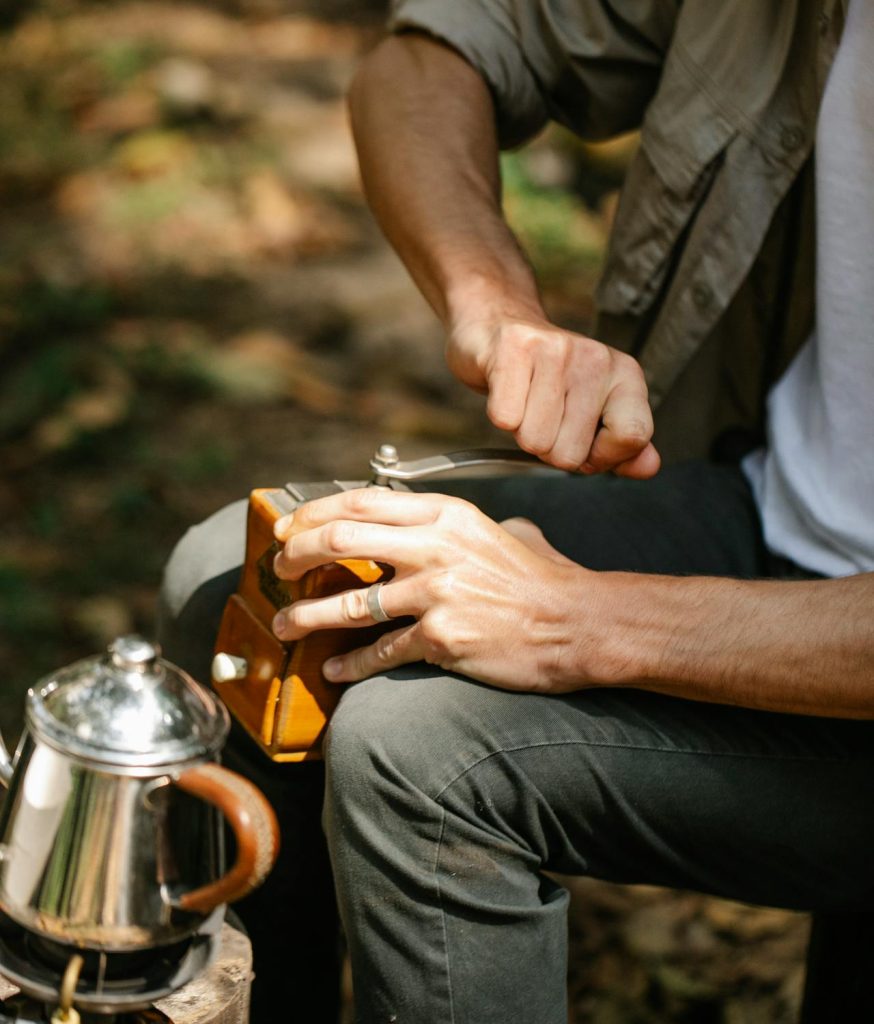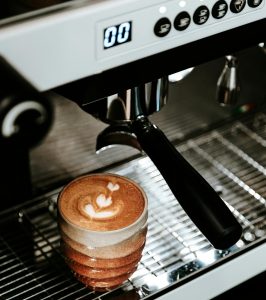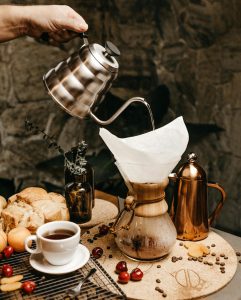Recently floor coffee is the name of the game for a full-bodied, fantastic-tasting cup. Yet not everyone owns a coffee grinder, and grinders sometimes break or are not to be found.
Luckily, thanks to other tools, you might be able to grind coffee beans without a grinder at home. Having the know-how on grinding coffee beans without a grinder would be a rescue for you if you are traveling, on your way or seriously making do.
Here, we will discuss different ways of grinding espresso beans when a grinder is not available. Some, such as a meal processor or blender, are speedy and smooth, yet others, such as rolling pin or mortar and pestle, are more work-intensive and have finer control over grind time. With this information, you will never again find yourself without a grinder.
Why Grind Size Matters for Coffee Brewing
Your grind size for coffee will affect the extraction technique in an effort to decide the taste and aroma of your coffee. Each brewing approach needs a one-of-a-kind grind length for a high-quality taste.
French press and bloodless brew need a rough grind, a medium grind for drip coffee makers and pour-over methods. Espresso and AeroPress require a fine grind. However, Turkish espresso requires an excellent grind.
How to Grind Coffee Beans Without a Grinder?
Following are some of the best options to grind a coffee beans without a grinder:
Using the Services of a Blender
A blender is the easiest manner of grinding coffee beans in case you don’t have a grinder. The majority of blenders include a pulse alternative, which lets you grind the beans in small portions at a time.
To get an excellent grind, pulse the blender in brief bursts instead of having it run continuously. This prevents the coffee from being overheated and dropping its oils. Blending works quality at a medium to coarse grind and is therefore properly proper for drip coffee or French press.
It may be used to create uneven consequences, so sifting the grounds through a sieve may also help to cast off smaller particles.
Grounding with a Mortar and Pestle
A pestle and mortar allow you to grind your espresso beans with the aid of hand, and this offers you complete manipulation of the grind size. It’s a sluggish manner to do matters but top-notch for getting a medium to pleasant grind. Start with the aid of putting in a small amount of beans, after which spoil and grind those up the usage of the pestle with a circular motion.
Applying the same strain will make certain the grind could be even. This could be time-consuming but ideal for the person who prefers grinding coffee the conventional way with no need for a grinder.
With a Rolling Pin
One different sensible implement to apply for grinding coffee beans is a rolling pin, in case you need a rough or medium grind. Place the beans in a secure plastic bag or in between two layers of parchment paper so you do not now create a multitude.
Roll the rolling pin over the beans and then roll backward and forward them to crack them further. This takes a bit of elbow grease. However, it produces better consequences than both a hammer and a knife. This technique works for pour-over and drip espresso brewers as well.
Using a Hammer or Meat Tenderizer
Grinding coffee with a meat tenderizer or hammer is satisfactory for a coarse grind, which suits French press or cold brew. To try this, place the beans in a plastic bag or underneath a smooth towel, then lightly faucet the beans with the hammer.
Do not press too tough so that the beans don’t become ground into powder. While the system is straightforward, warning must be taken no longer to scratch surfaces or produce unevenly floor espresso.
Using a Knife
A correct-quality chef’s knife is able to grind espresso beans as and while vital. Place the beans on a reducing board and apply stress to the use of the flat of the blade. Once beaten, employ a rocking movement with the knife to bash the beans similarly into finer fragments.
This technique presents a path to medium grind; however, requires care and accuracy to avoid mounds. It isn’t always perfect. However, it’s far first-rate if no other devices are to be had.
Using a Food Processor
A food processor is hired similarly to a blender to grind coffee beans. Place a small quantity of beans in the processor and pulse in quick cycles so the processor will not overheat. Tipping the processor barely allows for a more uniform grind.
This is ideal for medium to coarse grinds and is appropriate for French press or bloodless brew espresso. However, as with a blender, sifting the espresso grounds afterward can eliminate large portions.
Tips for Grinding the Best Coffee Without a Grinder
It is difficult to grind espresso manually. However, certain hints can help make the task less complicated. Grinding in batches will bring about a better grind and save you from overloading your tool.
When grinding with a meal processor or blender, brief pulses are most effective for long mixing to save the beans from getting too hot. Purchase the coffee beans from organic coffee Arabica bean suppliers to get better experience.
Conclusion
In a nutshell, it is easy to grind the coffee beans without having a specific grinder. You can use gadgets like blender, rolling pin, mortar and pestle or even knife to grind it. Every gadget has its own pros and cons but after using them for some time, you will find out what suits your specific needs the best.
Each one has its positives and negatives, but with time, you’ll find the one that fits your brewing wishes. Purchasing coffee beans from reliable organic coffee Arabica bean distributors offers high-quality in budget.
No matter if your move is a French press, drip coffee, or coffee, the ability to grind espresso beans without a grinder means you’ll in no way accept 2nd excellent on the subject of flavor. Experiment with those techniques and tinker around with diverse grind sizes to peer what works in your move-to brew.



